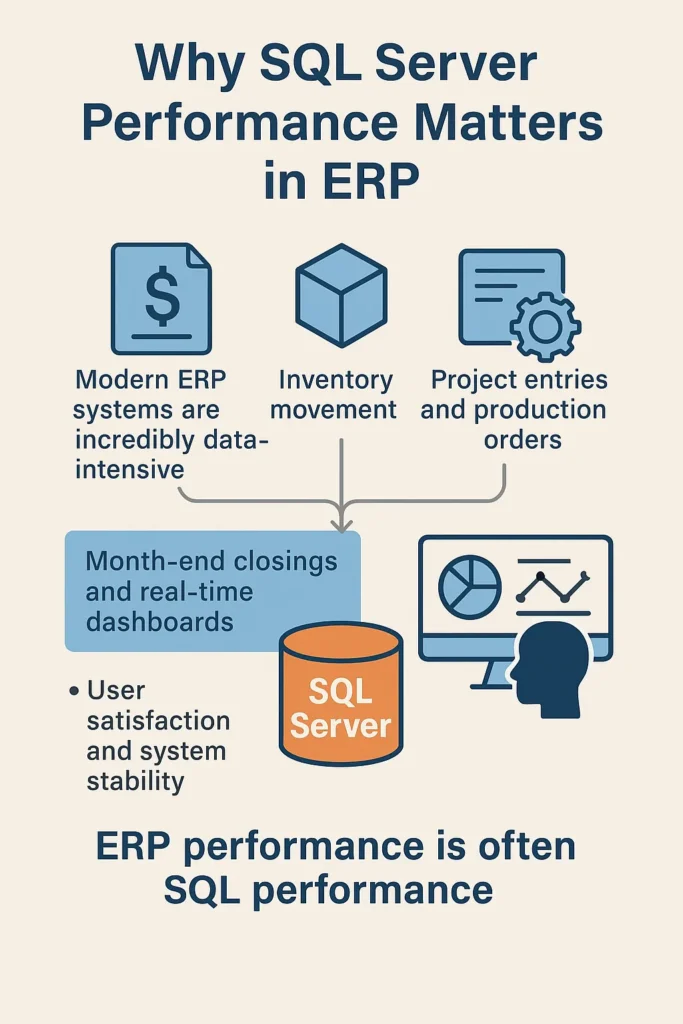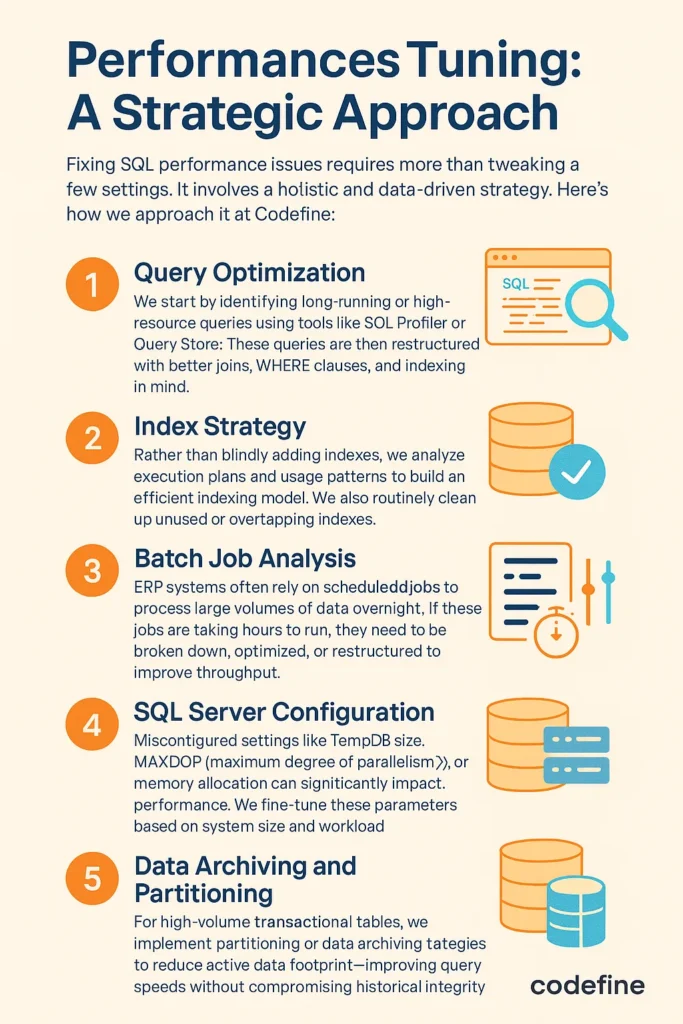When we talk about ERP systems, the conversation often centers around user interfaces, process automation, and reporting capabilities. However, what’s happening under the hood—especially at the database level—is just as crucial. For enterprise applications like Microsoft Dynamics 365 Finance and Operations (D365 F&O), SQL Server performance can make or break the entire system.
In this post, we’ll explore why SQL Server optimization matters, what common issues arise, and how a targeted approach to performance tuning can dramatically improve the speed and reliability of your ERP operations.
Why SQL Server Performance Matters in ERP
Modern ERP systems are incredibly data-intensive. Each financial transaction, inventory movement, project entry, or production order gets stored, retrieved, and processed through SQL Server. With hundreds of users simultaneously generating queries, even small inefficiencies can compound into major system slowdowns.
Poor SQL performance doesn’t just mean longer wait times—it affects everything from month-end closings and real-time dashboards to user satisfaction and system stability. In short, ERP performance is often SQL server performance.

Common SQL Server Bottlenecks in ERP Projects
Despite its critical role, SQL Server is frequently under-optimized in ERP implementations. Here are some of the most common culprits:
- Inefficient Queries
Poorly written queries—especially those usingSELECT *, nested subqueries, or unnecessary joins—can strain the database engine. - Missing or Excessive Indexing
Too few indexes lead to slow reads; too many can degrade write performance and increase maintenance overhead. - Blocking and Deadlocks
Simultaneous operations on the same set of records can cause users to experience freezing or timeouts. - Suboptimal Execution Plans
Without proper statistics and indexing, SQL Server performance may choose inefficient query plans, resulting in longer runtimes. - Lack of Archiving Strategy
Tables with millions of historical rows slow down query performance if old data isn’t properly archived or partitioned.

Real Results: What to Expect from SQL Optimization
When ERP systems start to slow down, the first instinct for many companies is to scale up their infrastructure more CPU, more RAM, a bigger cloud plan. While hardware upgrades can sometimes help, they often only mask the underlying problem: poorly optimized SQL server performance.
- Up to 80% faster report generation
- Reduced batch job times from hours to minutes
- Lower resource consumption, saving on licensing and cloud costs
- A smoother, frustration-free experience for end-users
ERP Isn’t Just About Features—It’s About Performance
A system can be functionally perfect—configured with all the right modules, custom workflows, and beautiful dashboards. But if the performance doesn’t meet expectations, users will reject it. Performance issues manifest as frustration, productivity loss, and even resistance to digital adoption.
That’s why we believe ERP success doesn’t come from features alone—it comes from speed, stability, and scalability. And SQL Server is at the heart of all three.
Why Codefine?
At Codefine, we specialize in Microsoft Dynamics 365 Finance and Operations (D365 F&O), and SQL Server performance is the backbone of every project we touch. Our team has over 20 years of real-world experience, and we’ve seen firsthand how even minor performance issues can cascade into major operational problems.
We don’t just “tune” databases—we analyze execution plans, data models, indexing strategies, system configuration, and batch processes to build a complete performance improvement roadmap tailored to your business.
Whether your system is already live or still in rollout, we can identify and eliminate the bottlenecks holding your ERP back.
Let’s Optimize Together
Struggling with slow reports, delayed workflows, or database spikes during peak hours? You’re not alone—and you’re not stuck. With the right expertise, SQL Server can go from being your ERP’s bottleneck to its biggest accelerator.
Learn more about our services here.
Learn more about SQL Server performance tuning on the official Microsoft Docs here.









